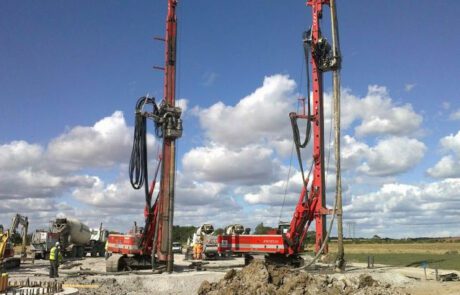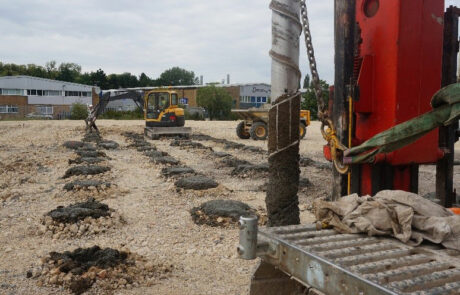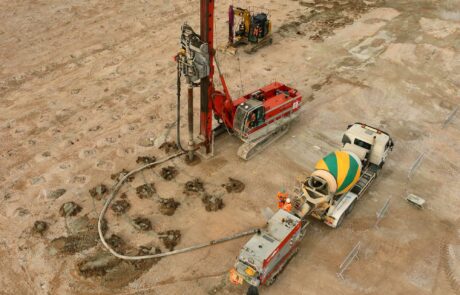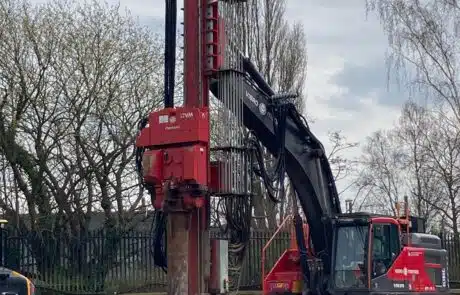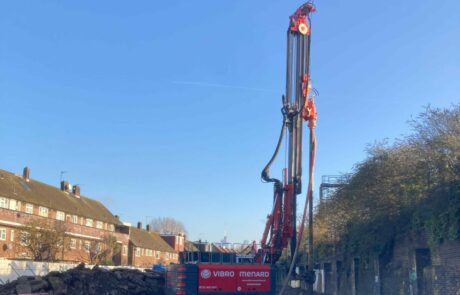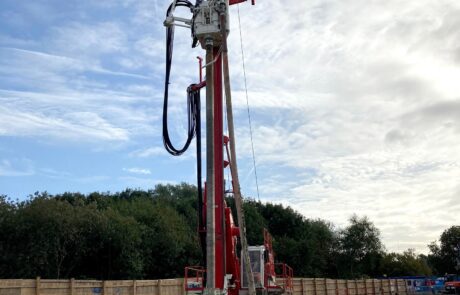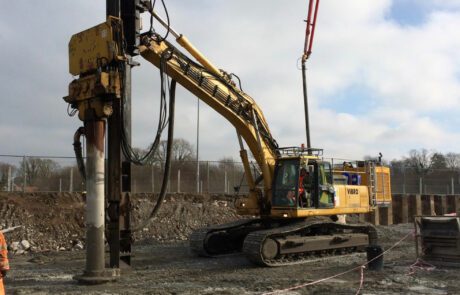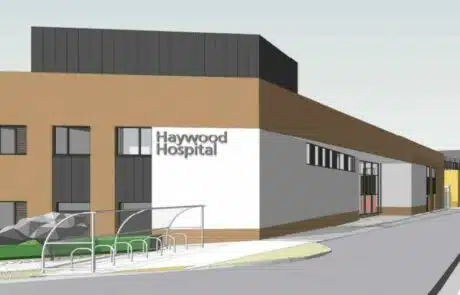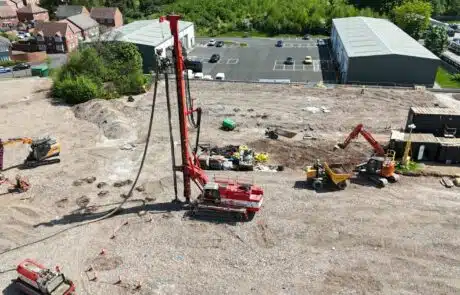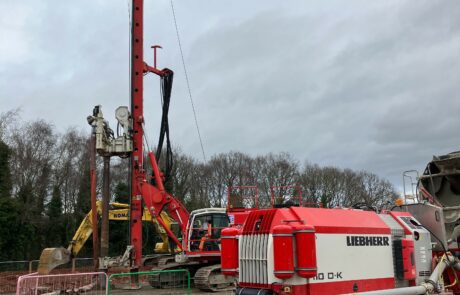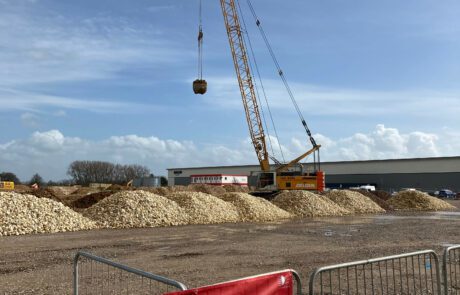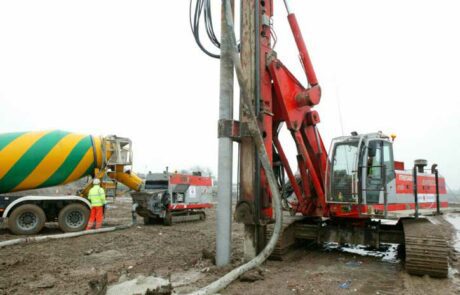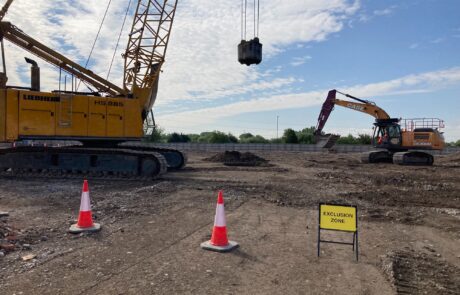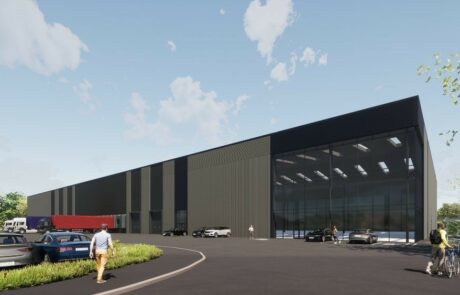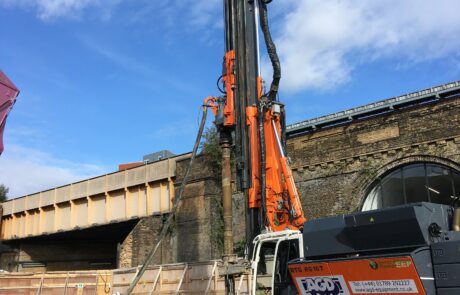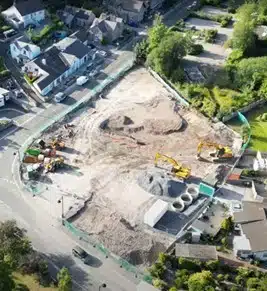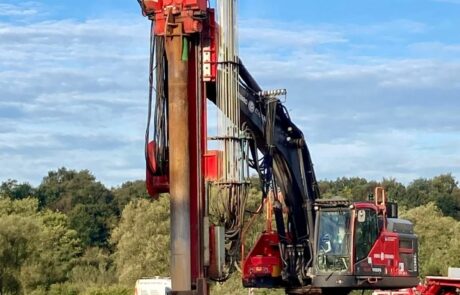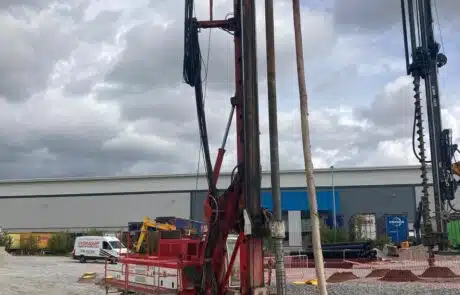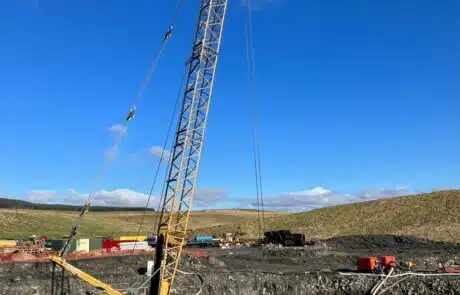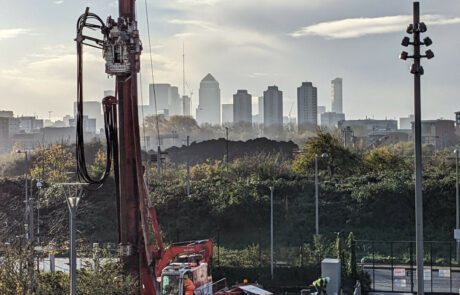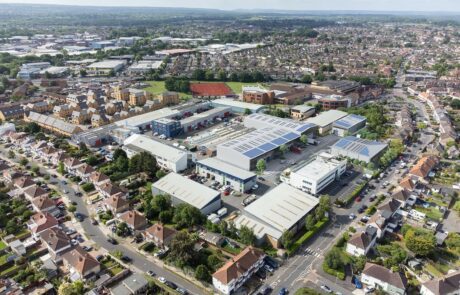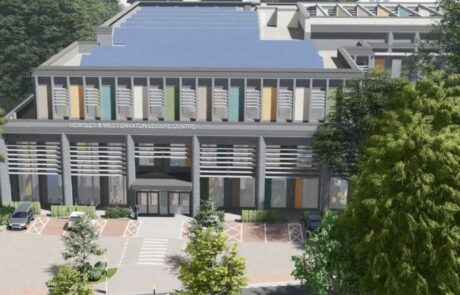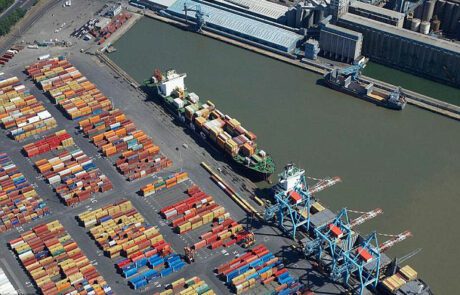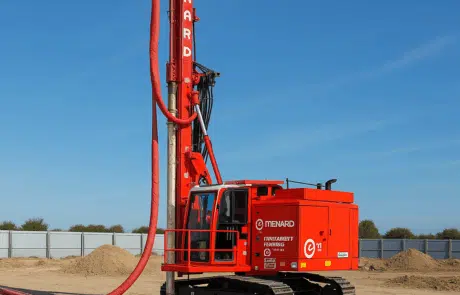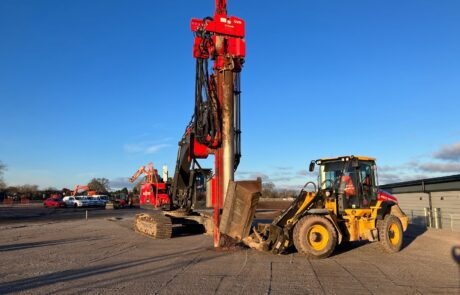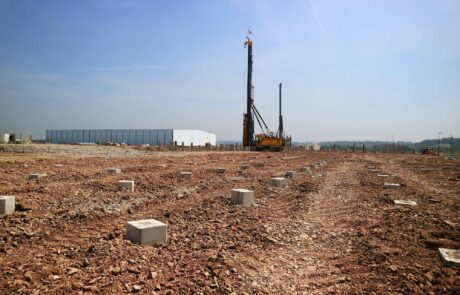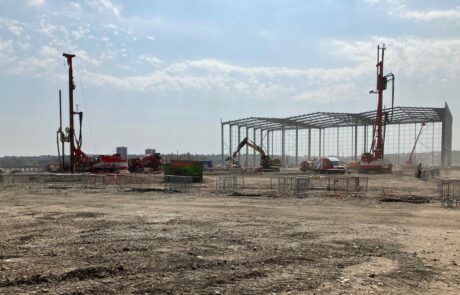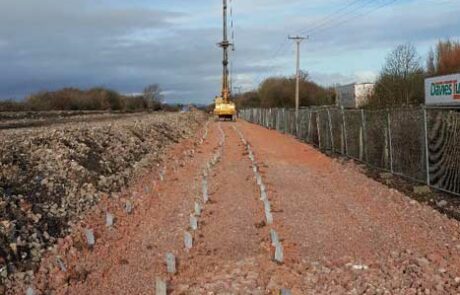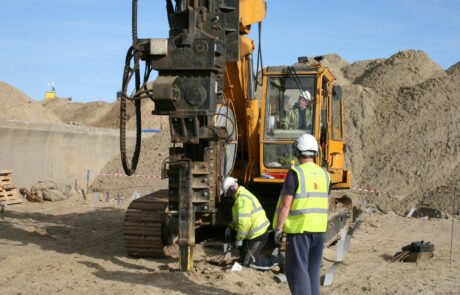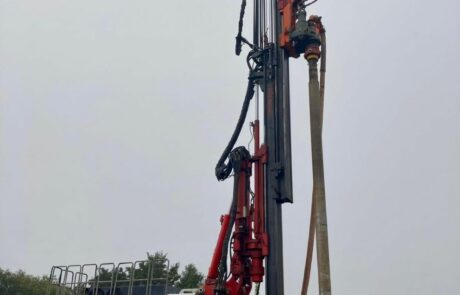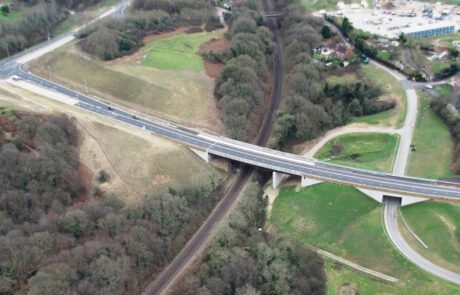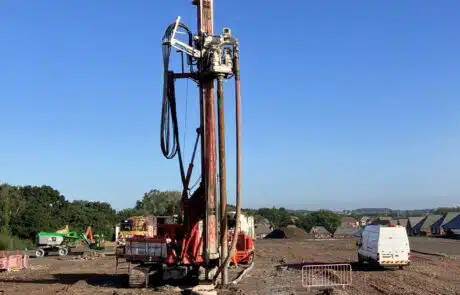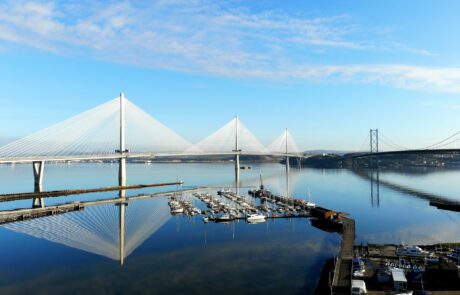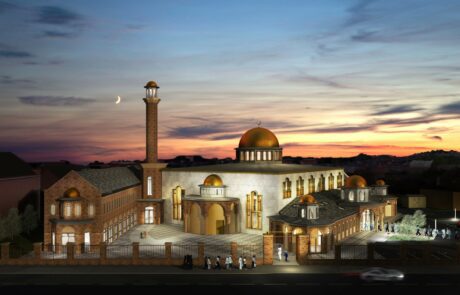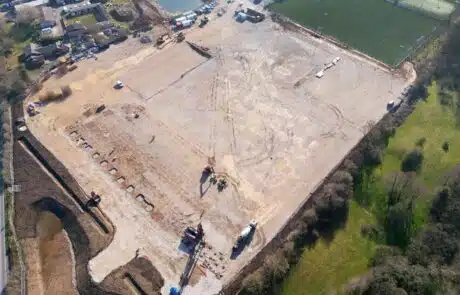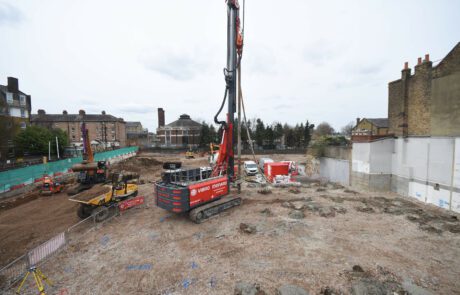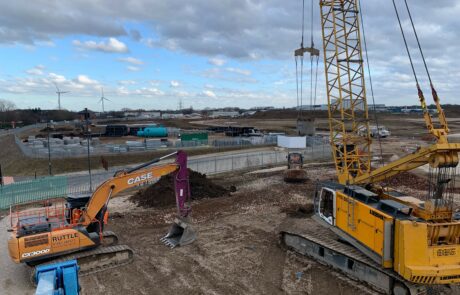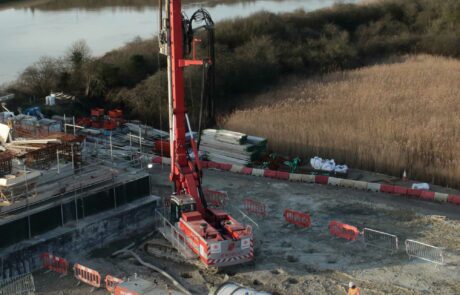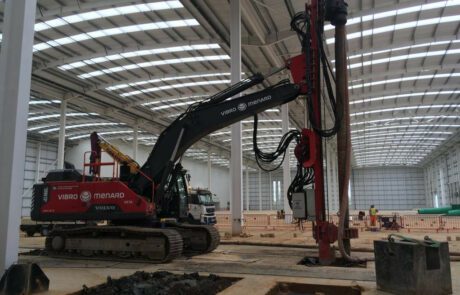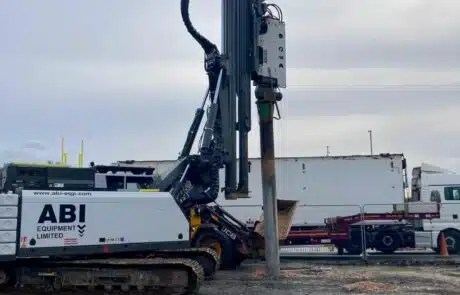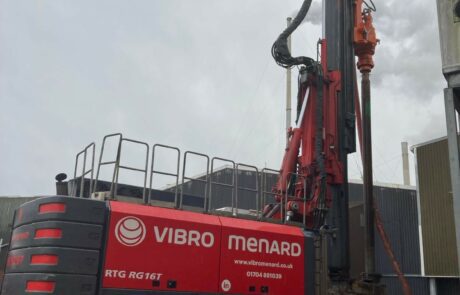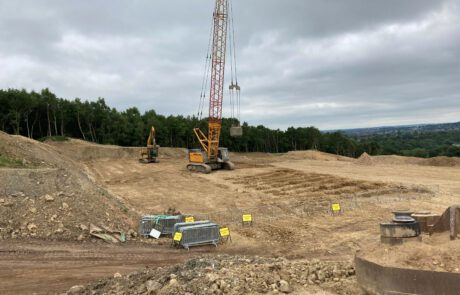OWNER:
Brockwell Energy
ENGINEER:
Tony Gee
GENERAL CONTRACTOR:
JONES BROS INC
MAIN FIGURES:
CMCs and DC to a series of 21.5 m/22.2 m diameter gravity bases
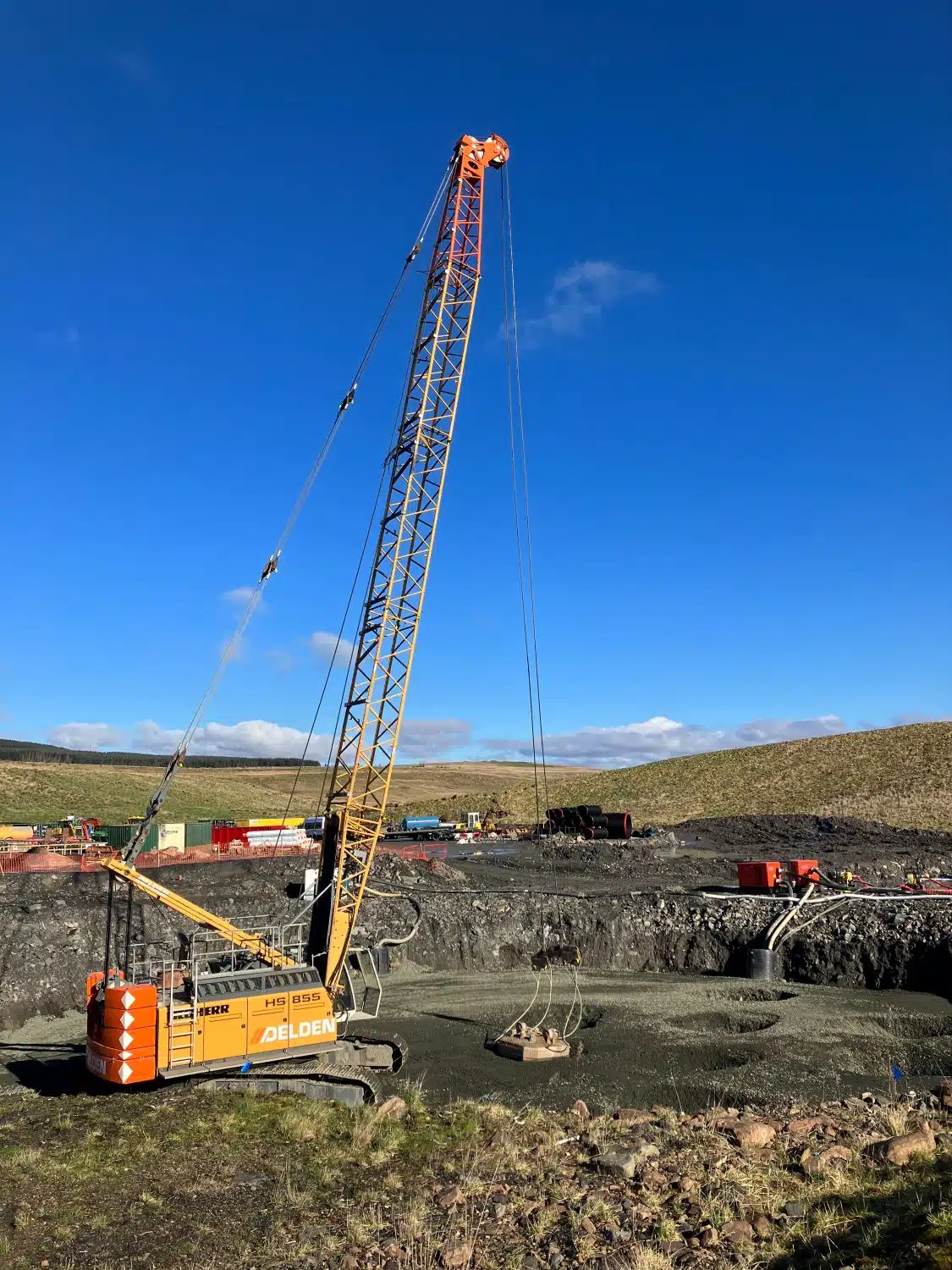
Project Details
Menard was initially approached by a design consultancy, Tony Gee, to assist in developing a ground improvement solution which would enable the construction of several gravity-based wind turbine structures at a development titled North Kyle Wind Farm, located in Ayrshire, Scotland. Menard was subsequently contracted by Jones Bros to undertake the ground improvement works on the site.
Ground Conditions
Owing to the large extent of the overall development area and significant spacing between individual turbines, there was a distinct variation in the ground conditions within the designated treatment zones. One profile consisted of fully natural soil conditions, with PEAT overlying soft to stiff CLAY, and MUDSTONE as the bedrock material beneath the stiff CLAY. The depth at which PEAT and soft CLAY were encountered ranged from 6 m to 9 m below existing ground level. For the second distinct soil profile, the turbines were situated within a backfilled opencast quarry, with MADE GROUND overlying stiff CLAY and MUDSTONE. The depth at which MADE GROUND was encountered ranged from 13 m to 18 m below existing ground level. The MADE GROUND was a mixture of cohesive and granular material, with gravel sized fragments of Coal Measures and occasional fragments of organic material.
Solution
For the natural soil profile treatment areas, Menard utilised their Controlled Modulus Column (CMC) solution to treat through the PEAT and soft CLAY material, with CMC lengths up to 9 m below underside of turbine base level. For the backfilled open cast quarry zones, Menard adopted their Dynamic Compaction (DC) solution, with effective compaction depth up to 12 m below the underside of turbine base level.
Both ground improvement solutions were designed to enhance the rotational stiffness of the sub-base formation and provide the requisite bearing capacity beneath each of the individual turbine foundations.
Menard’s ground improvement works were completed within 8 weeks across 2 separate visits to site. The works were undertaken with a single CMC rig and a single DC crane. The site movement logistics were successfully planned by Menards experienced Operations Team.
Sustainable development
The DC solution offers a reduction in Total Embodied Carbon Footprint (TECF) of up to 95%, when compared to a traditional bored piled solution for this application. A CEMIIIB mix design was adopted for the CMC concrete which is a low carbon mix.

